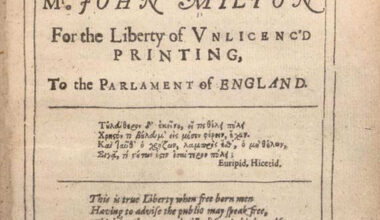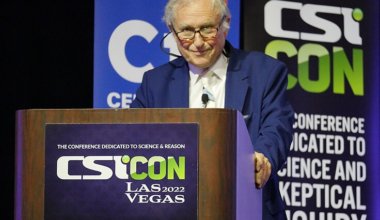
During the campaign for the polls which have seen him suffer major setbacks in his bid to be elected for a third successive term today, Indian Prime Minister Narendra Modi claimed that his birth was ‘not biological’ and that ‘God has sent me’. Over the past decade, Modi has resoundingly established himself as the central figure in the consolidation of Hindu nationalism. The irony of this has been that Hindu nationalism is based on a religio-philosophical tradition one of whose defining features is its very lack of a central authority. However, it is precisely this decentralisation, intrinsic to Hinduism—or Sanatana Dharma as many prefer to call it—and the freethought thereby allowed in the tradition which explains this paradox.
Modi’s ascribing of god-gifted qualities to himself to woo religious Hindus came four months after he inaugurated the Ram Mandir in Ayodhya, Uttar Pradesh. Despite fulfilling this longstanding vow to religious voters, and thus intensifying the focus on Hindu nationalism in Indian politics, the fact that Modi’s Bharatiya Janata Party (BJP) suffered its biggest losses in Uttar Pradesh is emblematic of the futility of constructing a power centre on Hinduism.
Hinduism’s scriptural ideas of god range from sarvaṃ khalvidaṃ brahma—a kind of anthropomorphic rendition of pantheism, meaning that everything comes from Brahman, the universal cause of existence—to the unequivocal agnosticism of Nasadiya Sukta, the Hymn of Creation: ‘Gods came afterwards, with the creation of this universe. Who then knows whence it [the universe] has arisen?’
Five of the six astika darshanas, or orthodox schools of Indic thought—Nyaya, Vaisheshika, Samkhya, Yoga, and Mimamsa—have incorporated various forms of nontheism. Nyaya and Samkhya, for instance, give much attention to human-centric epistemology and allow for nontheism or atheism. The concept of karma (present in all six schools in different forms) as a self-governing model of ethicisation can be held to strip god of the role of moral arbiter—and perhaps even of existence. Indeed, the three main nastika darshanas, or heterodox schools, Buddhism, Jainism, and Carvaka, are downright atheistic. The fact that the former two are simultaneously organised religions further illustrates the non-mandatory nature, perhaps even the superfluousness, of the god concept in a polytheistic tradition that incorporates the Tridasha, a pantheon of 33 Hindu deities. This also underlines the difficulty of comparing Abrahamic concepts of religion, god, theism, and so on to Indic ones.
While eight of the traditional nine schools of thought in Indic religion and philosophy preach divinity, Sanatana Dharma is fundamentally anthropocentric, unlike the theocentric Abrahamic faiths. It puts the abstract notion of Atman—essentially, the human self—at the foundation of the supernatural superstructure, which may or may not have been created by a divine power. This not only establishes faith and its individual expression as each human’s prerogative, but it also seeks to present a panentheistic theodicy to reconcile belief in a higher power with all the ills and evils in the world that any omnipotent deity would logically be held accountable for.
Carvaka, however, corresponds most closely to modern-day atheism. It takes no prisoners in denying the supernatural. The seventh-century Indic Buddhist philosopher Dharmakirti described the views of Carvaka thus: ‘Believing that the Veda are standard (holy or divine), believing in a Creator for the world, Bathing in holy waters for gaining punya, having pride (vanity) about one’s caste, Performing penance to absolve sins, Are the five symptoms of having lost one’s sanity.’ The adherents of Carvaka endorsed materialism, viewing pratyaksha, or direct perception, as the sole means of attaining knowledge and calling the concept of the afterworld and ‘the realm of Shiva’ fabrications of ‘stupid imposters’. The Carvaka school of thought has been referenced in everything from epics like the Mahabharata to the Mughal codes of law to modern-day podcasts.
How has the suppression of perceived sacrilege, whether in the shape of beef consumption or expressions deemed offensive to Hinduism—intended as such or not—become associated with a religious tradition that rejects the notion of there being one supreme god and one unquestionable truth?
How then did this diverse and pluralistic religio-philosophical tradition, which even includes an institutionalised school of thought that blatantly negates it, evolve into the monolithic doctrine represented by Modi and the Hindutva ideology that his BJP government endorsed for a decade?
How did the Hindu Rashtra, a nation-state founded upon Hindutva (‘Hinduness’), become the touted endgame of an ancient tradition that doesn’t even confine itself to the bounds of a universe, let alone a nation or a state?
How has the suppression of perceived sacrilege, whether in the shape of beef consumption or expressions deemed offensive to Hinduism—intended as such or not—become associated with a religious tradition that rejects the notion of there being one supreme god and one unquestionable truth?
While the Carvaka thinkers—similar to heretics in other religions—can be found throughout Hinduism’s 4,000-year-old history, much of their dissenting literature against the astika ideologues is found solely in orthodox writing, where they are cited only for opprobrium. Even as the Indic schools of thought have incorporated renunciations of religion, the Vedas nonetheless also condemn and shun the nonbelievers, and even endorse the use of violence against them. Elsewhere in the Hindu scriptures, one finds instances of a quasi-monotheistic insistence on one true god, which have been echoed by proselytising Hindu groups such as the Arya Samaj. Likewise, despite the prevalence of Vedic freedom of conscience, the Hindu scriptures have simultaneously and rigidly institutionalised casteism and misogyny for millennia.
Even so, this monolithism within Hinduism is but a corollary of Indic philosophy being a spectrum of darshanas, ranging from pantheism to polytheism to monotheism to atheism. While contradictions are an integral feature of all religious doctrines, in Hinduism these are consistent with the core tenet: freedom of belief. Therefore, even if there were to be a consolidated foundation to define a unitary Indic belief system, it would be freethought more so than any particular Vedic interpretation. But given the synchrony among the scriptural inconsistencies within Hinduism, Indic freethinking inevitably becomes a function of time and power: it is precisely the freedom granted to Hindus by the Indic philosophy that has paradoxically resulted in the rigidity of Hindutva ideology and the almost Abrahamization of Hinduism. With no core beliefs, freethought has allowed Hindus to customise various belief systems from an almost infinite spectrum of ideas, good and bad, depending on the historical context.

The Indus Valley Civilisation originally had no organised religious ideology, until the Aryan migration to India around 2000 BCE formalised what has since become Sanatana Dharma. Unlike Mesopotamia, Egypt, or Persia, whose indigenous belief systems and cultures were erased by Islamic empires, Indic syncretism not only safeguarded Hinduism in the region but in fact gave birth to various major Islamic sects. During the heyday of Muslim colonialism in the Indian subcontinent, Carvaka went underground, only to resurface when the more secular-minded Mughal emperor Akbar was formulating his own unitary Indic religion for his empire in the 16th century.
Similarly, Hindu monotheism arrived amid the Christian British Empire’s supplanting of the Muslim rulers of India, and the movement for Indian independence amid an Islamic separatist movement in the 19th century. Hindutva was born around the same time, punctuated by the trademark Indic paradox of having been founded by a staunch atheist, Vinayak Damodar Savarkar, whose ideals are being successfully implemented by Modi and the BJP.
The examples cited in these paragraphs underline that Sanatana Dharma has modified itself according to various times and challenges, for better or worse. In recent times, with Judeo-Christian and Islamic civilisations dominating the global religious discourse, a monolithic, even monotheistic, rendition of Hinduism, which endorses a quasi-theocracy with blasphemy-like laws, has emerged.
In monotheistic religions, where theocrats and clergies impose the fundamental tenets of the religion, freethought is defined as a rejection of these fundamentals. In polytheism, especially of the Indic variety, where freethought itself is the foremost fundamental, the most prevalent idea is self-imposed by the adherents. For the past decade, that idea was that India is a Hindu nation, with Vedic practitioners as its primary constituents. Perhaps it is through embracing the best ideals of Carvaka, forged by its millennia-old struggle against all forms of superstition and supremacism, that Indic freethought can truly be unshackled from religious groupthink and dogma and any interpretation of god can be rendered decisively irrelevant in matters of governance.
Related reading
‘We need to move from identity politics to a politics of solidarity’ – interview with Pragna Patel, by Emma Park
The resurgence of enlightenment in southern India: interview with Bhavan Rajagopalan, by Emma Park
‘Words are the only victors’ – Salman Rushdie’s ‘Victory City’, reviewed, by Daniel James Sharp
Campaign ‘to unite India and save its secular soul’, by Puja Bhattacharjee
Faith Watch, February 2024, by Daniel James Sharp
Faith Watch, March 2024, by Daniel James Sharp








2 comments
Very insightful and informative piece. Brilliant.
Brilliant article!! thank you for this @khuldune
Your email address will not be published. Comments are subject to our Community Guidelines. Required fields are marked *
Donate